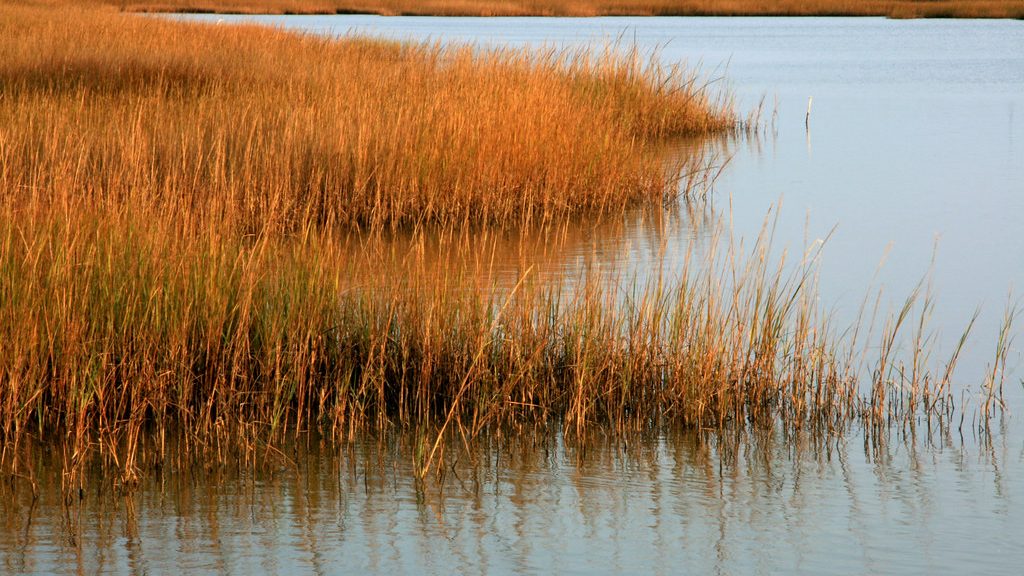Climate Change Adaptation for Coastal National Wildlife Refuges

Principal Investigator(s): Mitch Eaton, Southeast Climate Science Center; Jennifer Costanza, Department of Forestry and Environmental Resources, NCSU; Fred Johnson, Wetland and Aquatic Research Center, USGS; Julien Martin, Wetland and Aquatic Research Center, USGS; Laura Taylor, Center for Environmental and Resource Economic Policy and Department of Agricultural and Resource Economics, NCSU
Project Completion: August 2019. This project is Phase II of Understanding Conservation Management Decisions in the Face of Sea-Level Rise Along the U.S. Atlantic Coast. This project has now been completed.
Implements Science Plan Theme: 2, 4 & 5
Overview
Coastal ecosystems in the eastern U.S. have been severely altered by local processes associated with human development, including drainage of coastal wetlands, hydrologic alterations affecting sediment supply, and land-use change, and by global-scale ecological changes including sea-level rise and other effects associated with climate change. Together, these forces are degrading the capacity of ecological and social systems to respond to disturbance. The goal of this project was to foster active engagement with stakeholders; develop a comprehensive problem definition that expressed local values, knowledge, and perceptions; and encourage building of effective networks and trust across organizations and individuals in South Carolina’s Lowcountry. To address global change impacts at a regional level, we established the Cape Romain Partnership for Coastal Conservation to include representation from federal and state resource agencies, local conservation NGOs and organizations representing underserved community interests. Research topics, originating from discussions with Partnership members, focused on quantifying key drivers of change including localized sea-level rise (SLR) predictions, estimates of hurricane inundation as amplified by SLR, urban growth trends and forecasts, and impacts on management. Additional research included efforts to inform coastal planning through the development of models for understanding salinity dynamics, land-use change and its effects on flooding, ecosystem services, and forest management, and the impacts of uncertainty and risk on long-term investments in land protection.
Emphasizing broad stakeholder engagement as a means for successful adaptation planning, our interactions with Lowcountry planners and residents revealed a complex relationship between society and the environment, with sense of place, cultural heritage, and quality of life being important considerations for adaptation planning. With guidance provided by a bridging organization, community-based governance of the commons, in which broad stakeholder participation and power sharing are key elements, is essential for adapting this social-environmental system to the forces of global change.
View a SE CASC Science Seminar Series presentation summarizing this project:
More Information
- Project Fact Sheet: Building Adaptive Capacity in a Coastal Region Experiencing Global Change: A case study in the coastal plain region of South Carolina.
- Francis Marion National Forest: Adapting to Climate Change. This story map describes how climate change is transforming the region; how land changes and urbanization are affecting the area; and how land managers can improve the resilience of these lands to changing conditions. It was a collaboration between USGS and USFS, based largely on work done for the Cape Romain Partnership for Coastal Conservation and the Francis Marion National Forest Management Plan.
Relevant Web Posts
- Engaging Diverse Stakeholders to Adapt to Climate Change
- Building Adaptive Capacity in a Coastal Region Experiencing Global Change
- New SE CASC Publication Provides an Extended Framework to Address Conservation Planning Problems
- Hedge Betting Climate Change to Preserve Public Lands
- Forest “Boneyards” Reflect Climate Challenges at Coastal Refuge
- Modern Portfolio Theory Aids Reserve Design Under Climate and Land Use Change
- Research Spotlight: Cape Romain Partnership for Coastal Protection
- Scientists Work to Understand Conservation Decision Making in the Face of Sea-Level Rise
